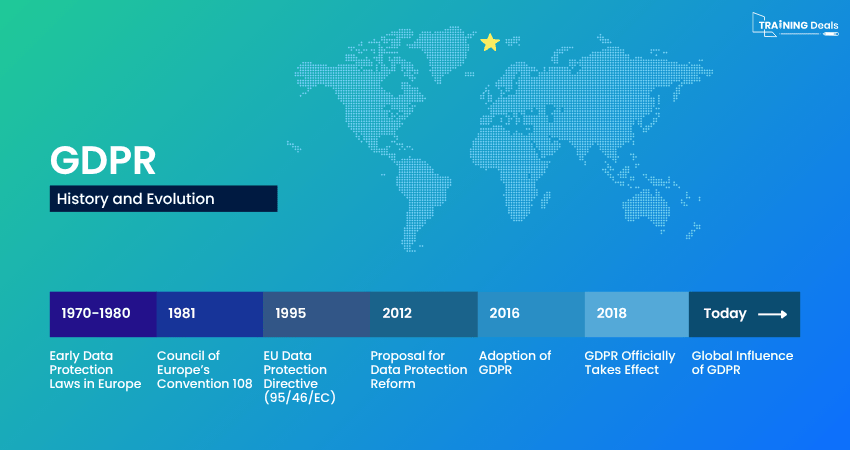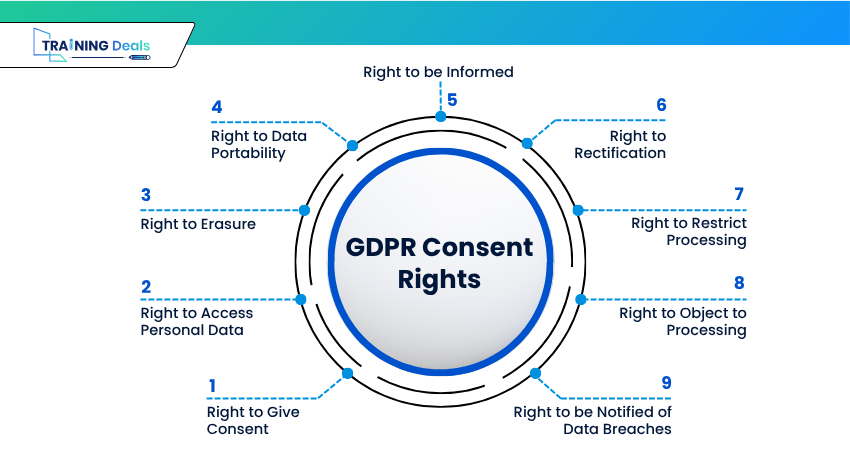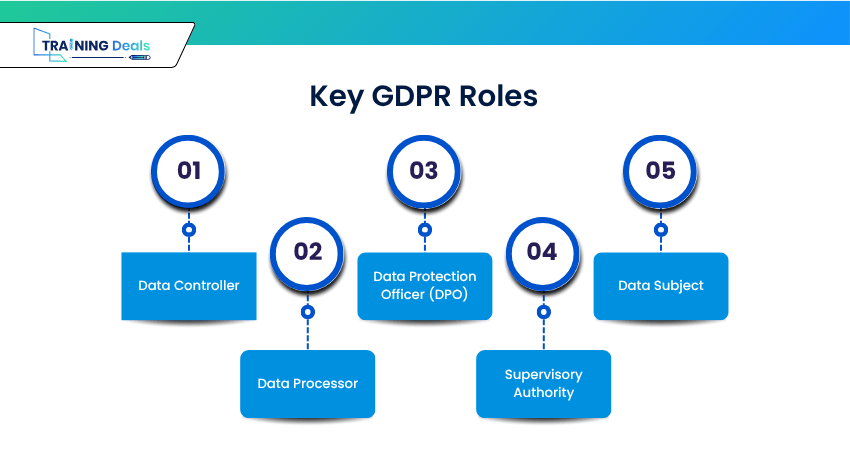

Maria Thompson
You have probably clicked “I Agree” on many privacy pop-ups. But do you know what you agreed to? Each time you do that, you are allowing websites to collect your personal data like your name, email, browsing habits, and even your location. Most of us don’t realise how much of our personal details travel across the internet every day, often without our understanding.
That’s exactly why the General Data Protection Regulation (GDPR) was created. It aims to protect your privacy and ensure that your personal data is handled responsibly. In a time when data has become one of the world’s valuable assets, GDPR stands as a reminder that privacy isn’t optional; it is a right. In this blog, we’ll explore what GDPR is, why it matters, and who needs to comply with it. Dive in to know your rights now!
What is GDPR (General Data Protection Regulation)?
The General Data Protection Regulation is a European Union (EU) law that governs how personal data is collected, stored, and used. It sets out clear rules for how organisations, both within and outside the EU, must handle the personal data of EU residents.
In simple terms, if your business offers goods or services to people in the EU, or tracks their online activity, you are required to comply with GDPR. Under GDPR, personal data refers to any information that can identify an individual. This includes:
a) Direct Identifiers: Names, phone numbers, passport details, or credit card numbers.
b) Indirect Identifiers: Date of birth, gender, or even behavioural traits, which, when combined, can identify someone.
The History of GDPR
The journey to the General Data Protection Regulation (GDPR) began long before it became law, reflecting how privacy rules evolved to keep pace with advancing technology and the rise of the digital world. Here’s a brief timeline outlining its formation and milestones:

a) 1970 – 1980: Several European countries introduced some of the earliest data protection laws. In 1981, the Council of Europe’s Convention 108 became the first international agreement focused on protecting personal data.
b) 1995: The EU Data Protection Directive (95/46/EC) was introduced to set common privacy rules across Europe. However, each country applied it differently, which caused confusion and uneven protection.
c) 2012: The European Commission suggested new laws to strengthen privacy rights and create a clear set of rules for all EU countries.
d) 2016: After years of discussion, the General Data Protection Regulation (GDPR) was approved on 14 April 2016 and published on 4 May 2016.
e) 2018: GDPR was officially started on 25 May 2018, replacing the old directive. It created one uniform data protection law for the EU and applied to organisations worldwide that handle EU residents’ data.
f) Today: GDPR is now regarded as the global benchmark for data privacy, inspiring many other countries to introduce similar data protection frameworks.
Who Needs to Comply With GDPR?
The GDPR applies to any organisation that handles the personal data of people living in the European Economic Area (EEA) which includes all 27 EU countries, along with Iceland, Liechtenstein, and Norway.
Businesses Based in the EEA:
All businesses and organisations within the EEA must follow GDPR if they collect, store, or use personal data. There are two main roles under GDPR:
a) Data Controllers: These determine how and why personal data is processed (for example, a company collecting customer information).
b) Data Processors: Handle or manage data on behalf of a controller (for example, a cloud provider storing that data).
A company can be both a controller and a processor. Even if it stores or handles data outside the EEA, it still has to follow GDPR rules.
Businesses Outside the EEA:
GDPR also applies to companies based outside the EEA if they:
Offer goods or services to EEA residents, even if free of charge.
Track or monitor the behaviour of EEA residents (like using cookies or analytics tools).
Process personal data for an EEA-based business.
What are the Core GDPR Principles?
The GDPR is built on seven core principles that guide how personal data should be collected, used, and protected. These principles ensure fairness, transparency, and accountability when handling personal information.

1) Lawfulness, Fairness and Transparency
This principle ensures that data is collected and used in a legal, fair, and clear way.
a) Lawful: You must have a clear reason for collecting data, like getting someone’s consent or needing it for a service.
b) Fair: Use data in a way people would expect and that doesn’t harm them.
c) Transparent: Tell people what data you collect, why you need it, and how you use it, in simple language.
Example: If someone signs up for your newsletter, tell them you’ll use their name and email to send news or offers, and that they can unsubscribe whenever they want.
2) Purpose Limitation
You have to collect and use personal data for the specific purpose you originally stated and not for anything else. Every purpose needs to be clear, specific, and communicated to the data subject. This helps avoid any kind of misuse of your information.
Example: If you collect email addresses for sending newsletters, you can’t later use them for marketing other products unless people agree to it.
3) Data Minimisation
This principle means collecting only the data you actually need and nothing extra. If you just need a name and email, don’t ask for extra details like a job title or address. Keeping less data also reduces risks if a breach happens.
Example: If you send a newsletter, you can only ask for a person’s name and email. You don’t need extra details like their age or home address.
4) Accuracy
Personal data needs to be always accurate and up to date. Organisations should take reasonable steps to correct or delete incorrect, changed or updated information. Having outdated or wrong details not only harms trust but can also lead to poor business decisions.
Accurate data = Better trust and fewer mistakes
Example: If someone changes their email address, update it in your list so their information stays right and they keep getting your emails.
5) Storage Limitations
You shouldn’t keep personal data longer than you need it. When it’s no longer useful for its original purpose, you have to delete it or make it anonymous. Keeping unnecessary data can increase the risk of breaches and violate GDPR.
Example: If someone unsubscribes from your newsletter, remove their details because you don’t need them anymore.
6) Integrity and Confidentiality
This principle focuses on data security. Personal information must be protected against unauthorised access, loss, or damage through encryption, secure passwords, and restricted access.
Protecting data = Protecting people’s trust
Example: Keep your newsletter list safe so only your team can see it and use strong passwords to prevent others from stealing your subscribers’ details.
7) Accountability
Accountability means fully owning how you handle personal data and being able to show that you follow GDPR. Keep clear records of your data processes, store proof of consent, train staff on privacy, and use the right tools and policies to keep information secure.
Example: If people sign up for your newsletter, keep a record of when they agreed, and train your team to use their data safely. This shows your business follows GDPR rules.
What are GDPR Consent Rights?
The GDPR Consent Rights help protect privacy and ensure that organisations handle information responsibly and transparently. Let’s go through the nine main rights under GDPR with examples:

1) The Right to Give Consent
People have the right to decide if and how their personal data can be used.
a) Consent must be given freely, without pressure or hidden conditions
b) It must be clear, specific, and easy to understand
c) People must take positive action to give consent (for example, ticking a box)
d) Consent can be withdrawn at any time
e) Companies must keep a record of how and when consent was given
Example: When someone signs up for your newsletter, they need to agree first and be able to unsubscribe whenever they want.
2) The Right to Access Personal Data
Individuals can ask to see the personal data a company has about them.
a) They can request a copy of their personal information
b) The organisation must explain how and why the data is being used
c) Information should be provided free of charge and in an easily readable format
d) Requests should be answered within one month
e) People can know who else knows their data
Example: A subscriber can ask what personal details you store (like their name and email) and how you use them.
3) The Right to Erasure (Right to be Forgotten)
People can ask for their personal data to be deleted.
a) If the data is not needed, it can be removed
b) If someone withdraws consent, delete their data
c) All copies must be removed from systems and backups
d) Deletion should happen quickly
e) Partners or third parties must also delete the data
Example: If a subscriber unsubscribes from the newsletter, you must delete their name and email from your mailing list.
4) The Right to Data Portability
This allows people to move their data from one organisation to another.
a) Data must be in a common, readable format
b) Transfers should be safe and quick
c) It applies to data that people shared directly
d) Helps users switch providers easily
e) Must be done without delay
Example: If a subscriber wants to move their contact info to another newsletter service, you must provide their details in a readable format.
5) The Right to be Informed
Individuals have the right to know what personal data is collected, how it is used, and why, before the process begins.
a) Organisations must be open and transparent about data collection
b) Information should be clear and easy to understand
c) People should know who collects their data and for what
d) Consent must be opt-in, not automatic
e) Changes in policy must be clearly shared
Example: When someone signs up, you must tell them you’ll use their name and email to send newsletters and not for anything else.
6) The Right to Rectification
This right allows people to correct wrong or outdated information.
a) Incorrect data must be corrected quickly
b) The company must confirm updates were made
c) People should have an easy way to request changes
d) Updates must be shared with others who have the data
e) Records should always be updated
Example: If a newsletter subscriber changes their email address, you must update it in your data list.
7) The Right to Restrict Processing
People can ask companies to pause or limit how their data is used.
a) Data can be stored, but not used
b) Often used while checking data accuracy
c) The company must respect the restriction
d) Users should be told when it is lifted
e) It helps avoid unwanted use of data
Example: A subscriber might ask you to keep their details but stop sending newsletters until further notice.
8) The Right to Object to Processing
Individuals can object to how their data is used, especially for marketing or profiling purposes.
a) Organisations must stop using the data upon objection
b) This applies particularly to direct marketing activities
c) The right must be clearly stated to users
d) There are no exceptions for direct marketing
e) Companies must keep opt-out lists
Example: If someone unsubscribes from your marketing emails, you need to stop sending them any emails.
9) The Right to be Notified of Data Breaches
If personal data is exposed or stolen, individuals must be told quickly.
a) Companies must report serious breaches
b) They must explain what happened and what is being done
c) The message must say what data was affected
d) People should get advice on how to protect themselves
e) Authorities must also be notified
Example: If your newsletter platform is hacked and subscriber emails are exposed, you must inform all affected users within a few hours.
The Business Implications of GDPR
GDPR gives people more control over their personal data and makes businesses responsible for protecting it. It applies to all companies in the EU and outside the EU if they deal with EU customers’ data.

Every business that collects or uses personal data should have a Data Protection Officer (DPO) or Data Controller to make sure the company follows the rules. Because GDPR isn’t just an IT concern. It affects marketing, sales, Human Resources and customer service. Businesses must now adopt a privacy-first approach, reviewing how they collect, store, and share personal data.
The Impact of GDPR on Customer Engagement
GDPR has reshaped how companies engage with customers. Let's check its impact especially with customer engagement:
1) Stricter Rules: Customers must agree before their data is used since there are no pre-ticked boxes or automatic sign-ups.
2) Trust Over Quantity: GDPR encourages honest, transparent communication.
3) Responsibility for Shared Data: Even if contact lists are bought, the company using them must ensure everyone has valid consent.
4) B2B Changes: Collecting business cards or emails doesn’t mean permission to send marketing messages. People have to agree with it.
5) Better Customer Relationships: It helps businesses gain trust by focusing on honest, permission-based communication.
Conclusion
GDPR has transformed how the world views data privacy. It empowers people to control their personal information and challenges businesses to handle data with care, honesty, and transparency. Becoming aware of What is GDPR isn’t just about compliance. It is about how to earn trust to build stronger, longer-lasting relationships. Implement it and stand out in the digital world tomorrow.
Search
No match found





















